Anyone with an eye on GPU availability and prices knows that we’ve finally reached a point where those pesky crypto miners won’t grab all the GPUs available on the market. So, is this a good time to purchase a new card? That depends on what you have your eyes on. You could be looking for a flagship AMD card, such as the RX 6900 XT or a mid-range card from Nvidia, such as the RTX 3070.
Both have a lot going for them, but to really know which one is the better choice, you’d have to do a lot of research. Thankfully, I did that for you, and the result is this 6900 XT vs 3070 comparison. If money is of no issue to you, the 6900 XT is the better choice because it performs better. If you’re budget-conscious, the RTX 3070 is the better choice, and you won’t have to sacrifice too much performance.
6900 XT vs 3070 – Quick Comparison
| RX 6900 XT | Specs | RTX 3070 |
|---|---|---|
| Navi 21 XTX (215-121000167) | GPU | GA104-300-A1 GA104-302-A1 |
| PCIe 4.0 x16 | Interface | PCIe 4.0 x16 |
| 5,120 | Cores | 5,888 CUDA Cores |
| 80 Ray Accelerators | RT Cores | 46 RT Cores |
| 320 | TMUs | 184 |
| 1,825 MHz | Base Clock (Founders Edition) | 1.500 MHz |
| 2,250 MHz | Boost Clock (Founders Edition) | 1.725 MHz |
| 16 GB GDDR6 | Memory | 8 GB GDDR6 |
| 2,000 MHz (16 Gbps) | Memory Speed | 1,750 MHz (14 Gbps effective) |
| 512 GB/s | Bandwidth | 448 GB/s |
| 256-bit | Memory Bus | 256-bit |
| 300 W | TDP (Founders Edition) | 220 W |
| 700 W | Required PSU (Founders Edition) | 650 W |
| 80℃ (176℉) | Max Recorded Temp (Founder Edition) | 79℃ (174.2℉) |
| 54.5dB | Max Fan Noise (Founders Edition) | 47.7dB |
| 1x HDMI 2.1 2x DisplayPort 1.4a 1x USB Type-C | Outputs | 1x HDMI 2.1 3x DisplayPort 1.4a |
RX 6900 XT
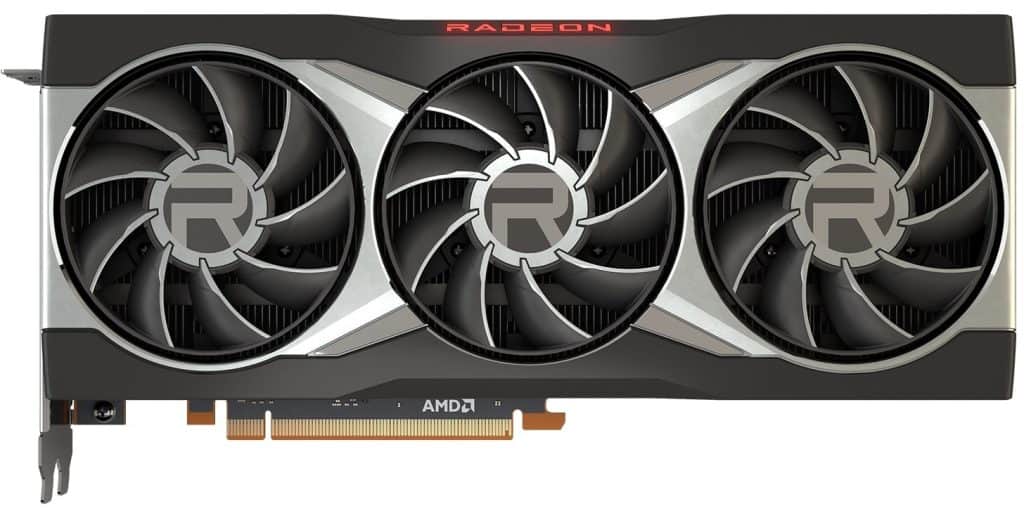
The AMD Radeon RX 6900 XT is an enthusiast-class card that launched on December 8, 2020, and disappeared from stock that same day (within minutes). It’s the second-best performer from the RX 6000 series and its flagship card, featuring 5,120 cores, 16 GB VRAM, DirectX 12 Ultimate, and ray tracing support.
AMD started in Silicon Valley over 50 years ago. It has gone on to produce some of the best CPUs to hit the market, motherboard chipsets, embedded systems, cloud infrastructure, and GPUs. While its low and mid-range GPUs could always compete with Nvidia’s, the more high-end and enthusiast-class cards were often missing from their offering altogether.
Pros:
- Better performance
- Larger VRAM
- Higher clock speeds
- Higher bandwidth
Cons:
- Higher TDP
- Much higher price
RTX 3070
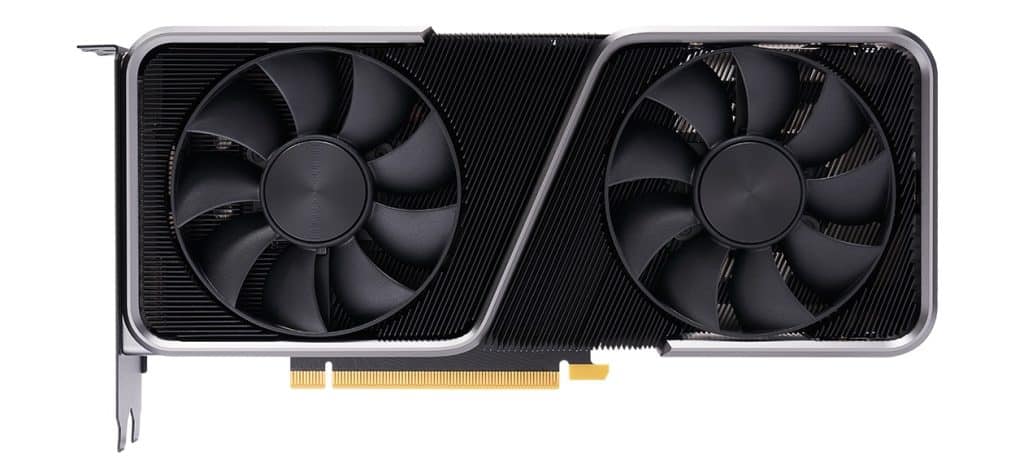
The Nvidia GeForce RTX 3070 is one of two high-end cards from the RTX 30 series. It hit the market in October 2020 as the third card of the entire series, offering 5,888 cores, 8 GB VRAM, and support for DirectX 12 Ultimate and ray tracing. All of that at half the MSRP of the 6900 XT.
Nvidia was the first company to develop a GPU. They successfully predicted what was coming in gaming and have spent years catering to the gaming industry first and foremost. This has changed in recent years as GPUs are becoming the backbone of many research and development operations worldwide, to which Nvidia has shifted focus.
Pros:
- Lower TDP
- Less loud
- More cores
- Much lower price
Cons:
- Lower clock speeds
- Lower performance
3070 vs 6900 XT – Key Specifications
Architecture
RDNA 2
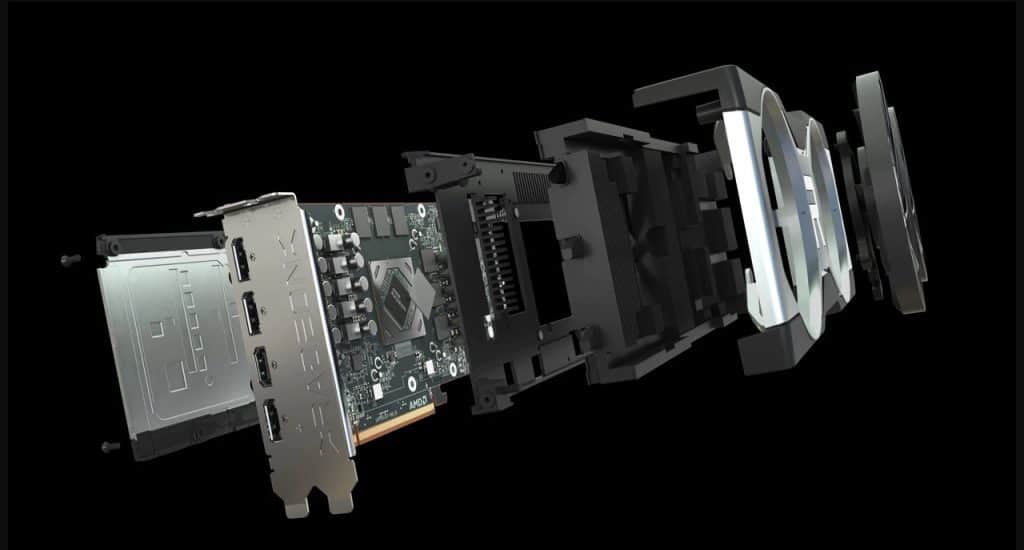
RDNA 2 was marketed as offering 65% more performance per Watt compared to RDNA (1). It fell short of that, with the realistic improvement being around 40-50%, still great nonetheless. RDNA 2 offered some key innovations, including a Resizable BAR (Smart Access Memory) and AMD Infinity Cache. RDNA 2 is also used in the PS5, and XBOX S and X Series.
Ampere
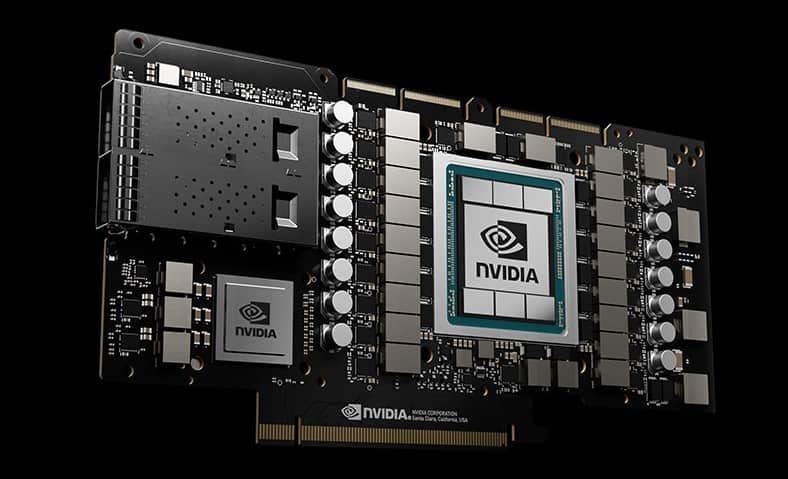
Ampere was designed with much more than just gaming in mind. It features a lot of technology that caters to AI and machine learning development and has built-in streaming features for content creators. It features Nvidia DLSS 2, second-generation Ray Tracing Cores, and third-generation Tensor Cores. Until the appearance of Ada Lovelace (RTX 40), Ampere was the fastest GPU architecture available.
Winner: RTX 3070
Also Read: GTX and RTX Graphics Card Differences Explained
Design and Build
Choosing a GPU is never about aesthetics, but design and build are important. The 6900 XT Founders Edition features a triple-fan design for more efficient cooling. Nevertheless, I’m not a fan personally because AMD chose to design the series without venting shafts that would expel heat through the back of the card and out of your PC case.
AMD cards are notorious for overheating, then throttling performance (and clock speeds) to lower heat. Nvidia did a much better job with their RTX 30 FE series. The 3070 has two fans, one to vent air in through the card and the other to push it out of the back of your PC case. A much better configuration if you ask me.
Third-party variants from partner companies offer designs in all shapes and sizes, including triple and quad-slot (ASUS RTX 3070 Noctua OC LHR) variants with enhanced cooling configurations.
Winner: RTX 3070
Clock Speeds & Overclocking
Clock speeds are the frequency at which a component, such as a GPU, operates. CPUs, RAM, and VRAM also have clock speeds. A 2,500 MHz clock speed means that your component handles 2.5 billion cycles per second. The RX 6000 series has higher clock speeds than the RTX 30 series, which is also true in this comparison.
Nowadays, GPUs have fluctuating clock speeds, with a “base” and “boost” designation. “Base clock” is the lowest frequency, while “boost clock” is how much of a boost you can expect when you need some extra power. AMD offers us a third number known as “game clock,” which is simply the average speed you should expect when gaming.
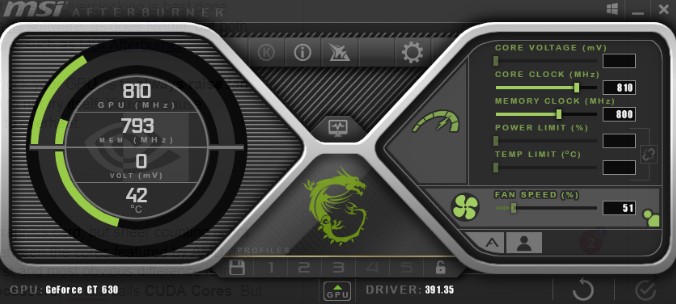
The 6900 XT has a base clock of 1,825 MHz and a boost clock of 2,250 MHz. The RTX 3070 has a base clock of 1,500 MHz and a boost clock of 1,725 MHz. If you find these speeds limiting, you can resort to overclocking your GPU using dedicated software from AMD, Nvidia, or third-party software such as MSI Afterburner.
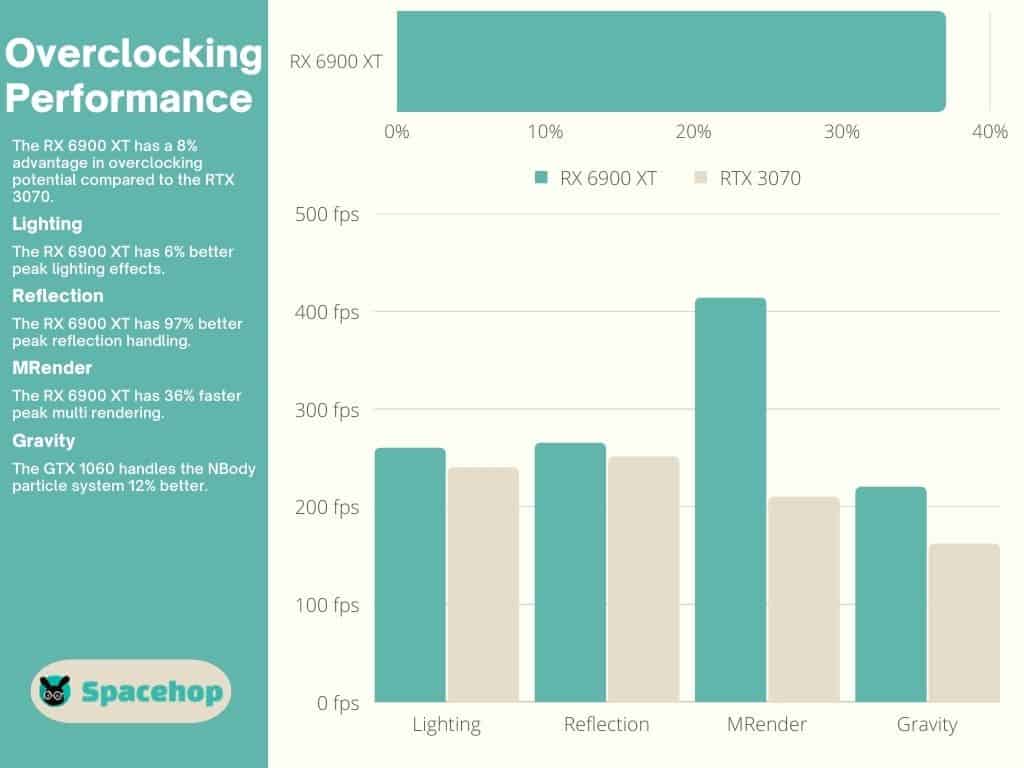
Many (if not all) third-party variants come factory-overclocked (look for the OC in their names), and I’ve compiled a list of the most powerful variants of both below. According to user tests, the 6900 XT is the better overclocker by 37%.
| Most powerful 6900 XT variants | Boost Clock | Most powerful RTX 3070 variants | Boost Clock |
|---|---|---|---|
| ASUS ROG STRIX LC RX 6900 XT GAMING TOP | 2,525 MHz | ASUS ROG STRIX RTX 3070 GAMING OC | 1,905 MHz |
| GIGABYTE AORUS RX 6900 XT Xtreme WaterForce WB | 2,525 MHz | ASUS ROG STRIX RTX 3070 V2 GAMING OC | 1,905 MHz |
| Sapphire TOXIC RX 6900 XT Extreme Edition | 2,525 MHz | MSI RTX 3070 SUPRIM X (LHR) | 1,905 MHz |
| XFX Speedster ZERO RX 6900 XT WB | 2,525 MHz | Colorful iGame RTX 3070 Vulcan OC (LHR) | 1,875 MHz |
| XFX Speedster MERC319 RX 6900 XT Limited | 2,495 MHz | Colorful iGame RTX 3070 Neptune OC (LHR) | 1,845 MHz |
Winner: 6900 XT
Core Configuration
The 6900 XT has 5,120 Stream Processors in its GPU. The RTX 3070 has 5,888 CUDA cores. Be it Stream or CUDA, they’re the same thing, essentially. The 6900 XT is based on the Navi 21 XTX GPU. The first crop of RTX 3070s appeared with the GA104-300-A1 units but was later produced with the GA104-302-A1 GPU because the latter featured a Limited Hash Rate (LHR), part of Nvidia’s anti-GPU mining action plan.
Shaders
Shaders are generic programs that leverage the cores in specific ways to create virtual 3D worlds. They once handled lights and shadows only but have evolved to handle much more in video game rendering. They are counted equally to the number of cores, earning the 3070 a win here.
RT Cores
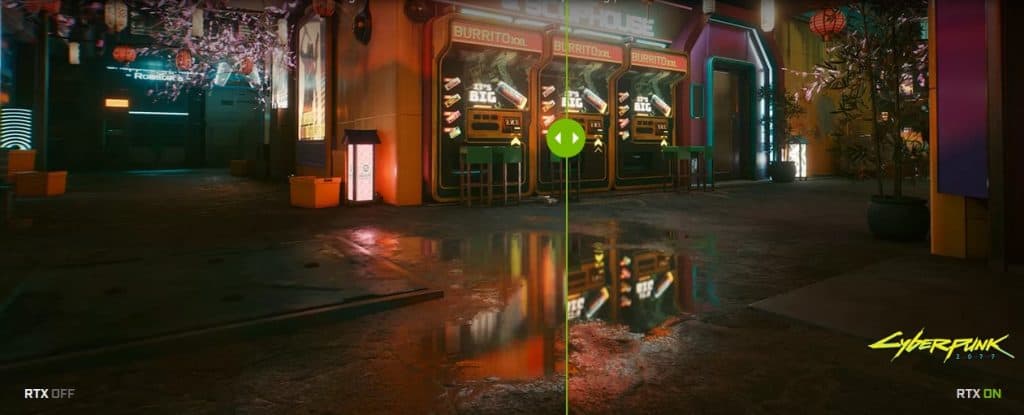
Ray tracing was previously only used in CGI movies. Nvidia broke this cycle by introducing the first real-time RT cores in the Turing architecture. Ampere uses second-gen RT Cores. AMD’s first go at ray tracing was in the RX 6000 series, but unlike Nvidia, AMD didn’t develop RT Cores of their own. Instead, they opted for using part of the compute units and dubbed them “Ray Tracing Accelerators.”
Ray tracing performance depends from title to title. Some titles, such as Cyberpunk 2077, do much better on the 3070’s RT Cores, while other, less taxing ray tracing games, such as Dirt 5, work better on the 6900 XT. It’s also worth noting that their performance is pretty much equal when ray tracing is turned on.
TMUs
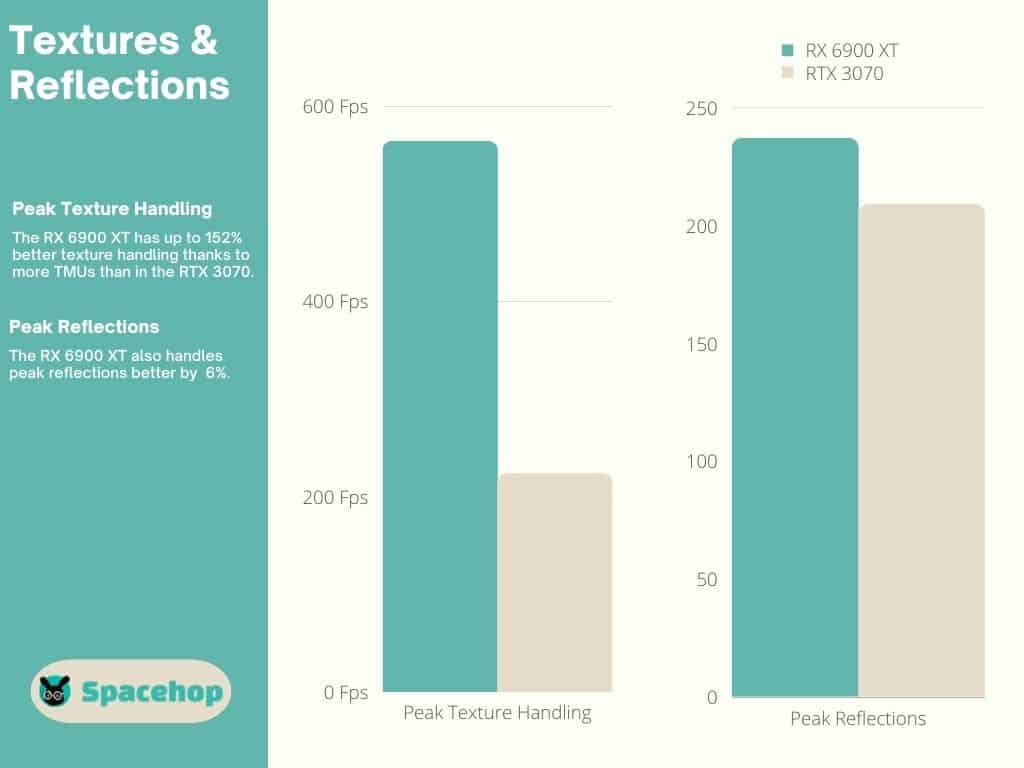
Texture Mapping Units, or TMUs, handle textures. In general, the RX 6000 series handles textures better than the RTX 30 series, and this is the case here as well. The 6900 XT has an amazing 320 TMUs, while RTX 3070 has 184. The result of this difference is that the 6900 XT has 152% better peak texture handling, according to user tests.
Winner: 6900 XT
VRAM & Memory Specs
One of the key selling points of the 6900 XT is its 16 GB VRAM. The RTX 3070 only has 8 GB. The 6900 XT has a memory clock speed of 2,000 MHz (16 Gbps effective), while the 3070 has 1,750 MHz (14 Gbps). The 6900 XT also dominates in bandwidth with 512 Gb/s compared to 448 GB/s.
Though 8 GB can handle every title currently available, at higher resolutions and detail settings, performance tends to bottleneck without sufficient VRAM. As new titles are released, the 6900 XT will prove to be the better long-term investment.
Smart Access Memory and AMD Infinity Cache also play important roles here. SAM enabled CPUs to access the entire VRAM of a GPU instead of the 256-bit blocks accessible before RDNA 2. Infinity Cache enabled higher bandwidths at lower latency and power consumption, cementing the 6900 XT’s dominance in VRAM and memory specs.
Winner: 6900 XT
Performance
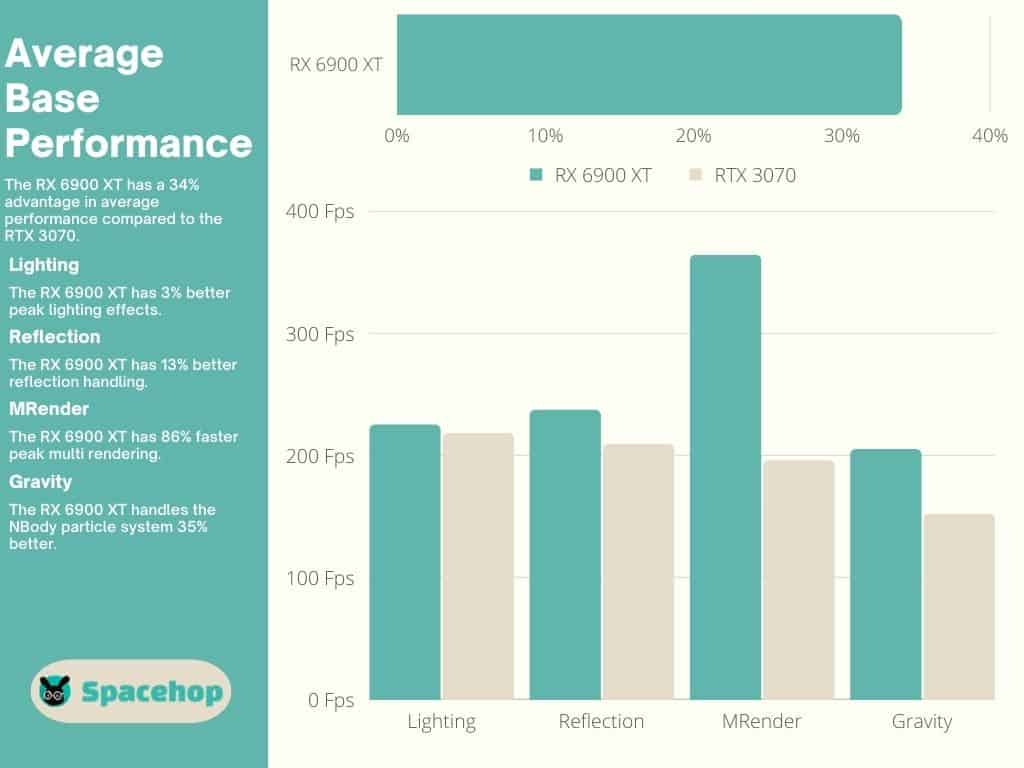
If there was any doubt, the RX 6900 XT is the better performer in this comparison. I tested 11 games with everything set to ultra. At 1080p the 6900 XT proves 38% better. At 1440p, the 6900 XT proves 39% better, and it proves to be 42% better at 4K. These are benchmark tests.
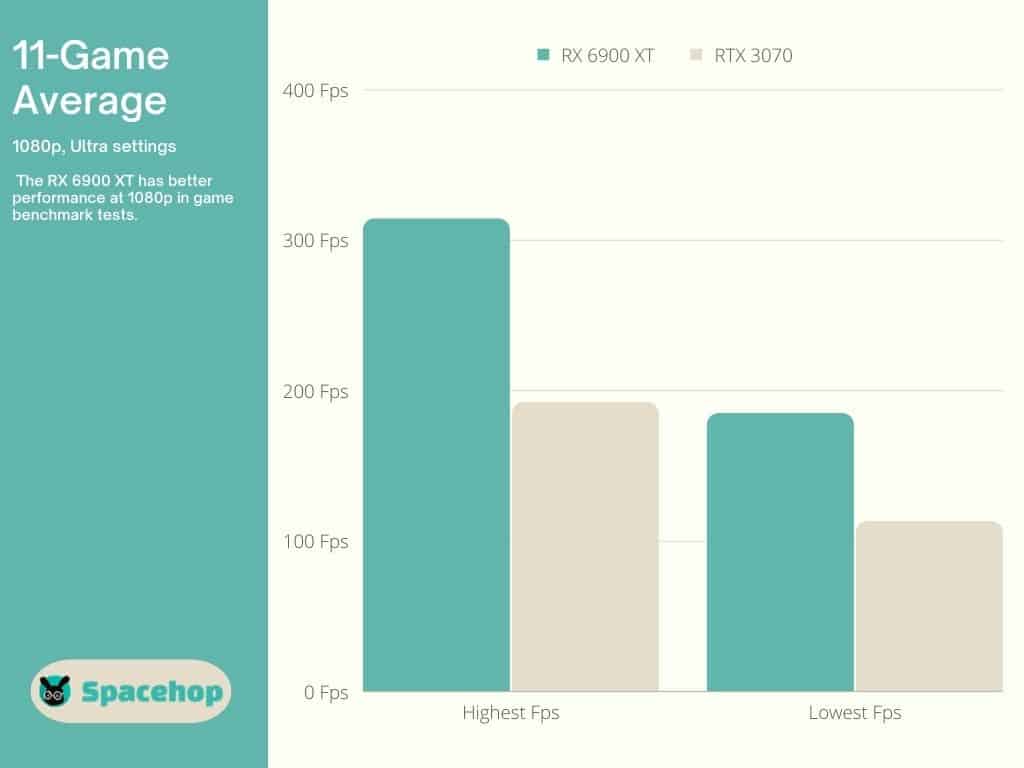
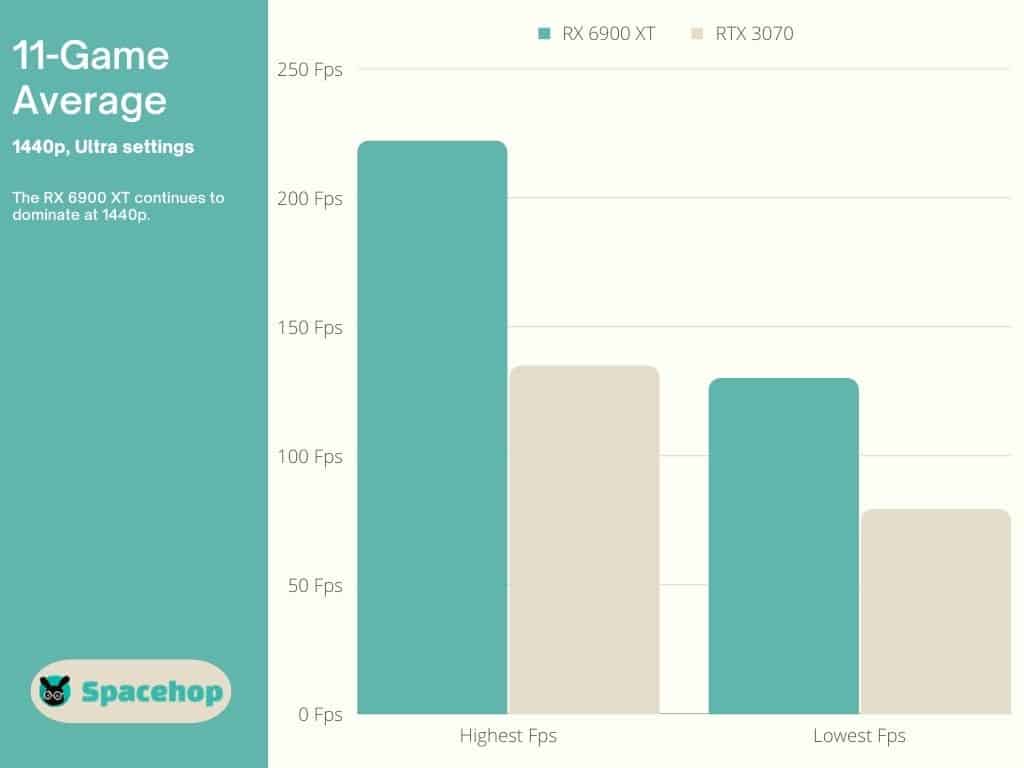
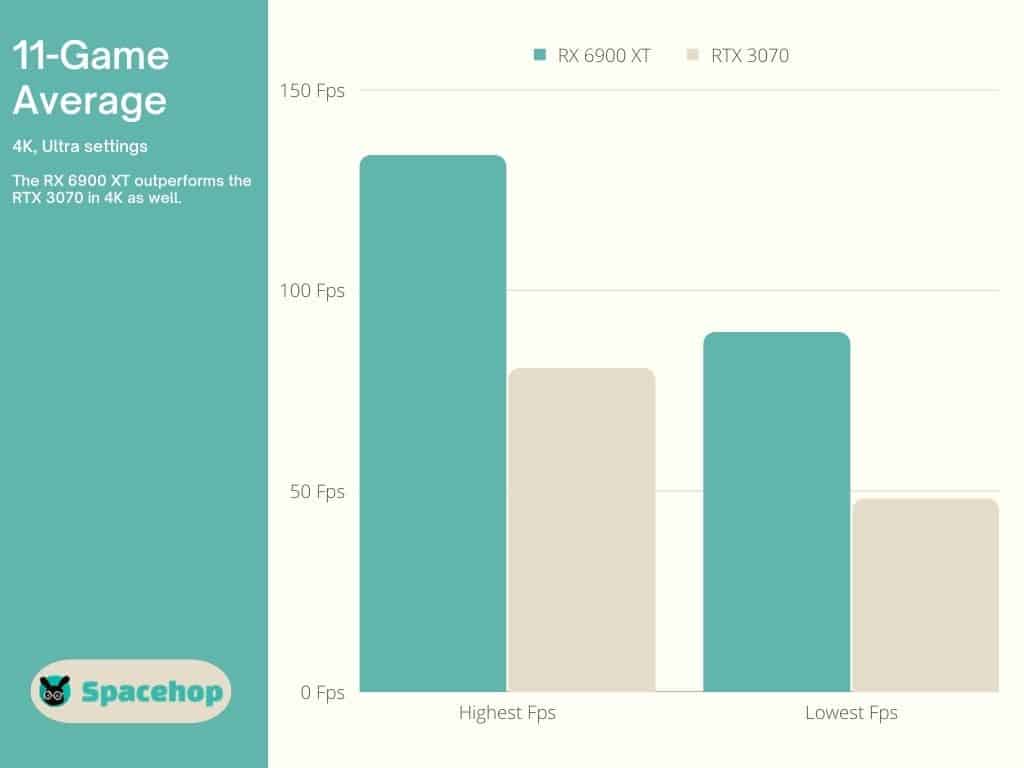
When we turn to user test results, we see a 19% better EFps score in favor of the 6900 XT. Not bad at all, but much lower than benchmark test results. We can also see that the market share of these two cards shows that the 3070 has 40 times the users of the 6900 XT. This is probably due to the lower price of the 3070. And it’s even more logical, considering you get only 19% better performance for double the price.
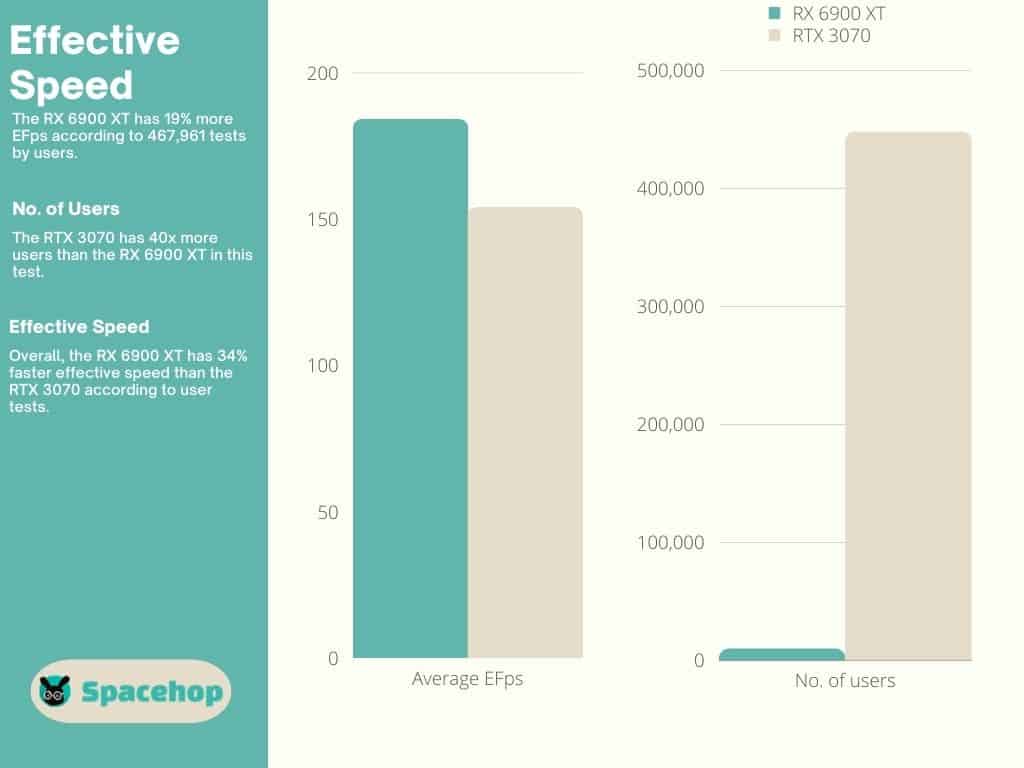
Winner: 6900 XT
Connectivity
Both cards have similar output configurations. The 6900 XT has one HDMI port supporting up to 10K resolutions and two DisplayPorts. It also features a USB-C port. The RTX 3070 has one HDMI port that also supports up to 10K and three DisplayPorts.
Both cards need additional power connectors to handle their large TDPs. The entire RTX 30 FE series featured a new 12-pin PSU connector port and sold 8-pin adapters with their FE cards. Third-party variants use 6 and 8-pin connectors. The 6900 XT uses a 2x 8-pin connector configuration, as do all of its third-party variants.
Winner: Draw
TDP
TDP refers to Thermal Design Power (how much power a subsystem draws from your PSU) and Thermal Design Point (how much heat it can produce). The 6900 XT draws 300 W and requires a 700 W PSU. It generated 80℃ (176°F) during testing but is rated as being able to go up to 110℃ (230°F). Don’t try this at home!
The 3070 draws 220 W and requires a 650 W PSU (as stated by Nvidia). Nvidia cards generally run cooler than AMD cards, and I reached a max temperature of 79℃ (174.2°F) during testing. Nvidia draws the line for their cards’ maximum heat (highest listed temp) at 93℃ (199.4°F).
Winner: RTX 3070
Pricing & Availability
The RX 6900 XT launched at a $999 MSRP. I found one listing for the FE variant priced 20% above MSRP. Third-party variants have become somewhat of a bargain, and most (if not all) are priced below the $999 MSRP. At one point, these cards were going for up to $2,000. Thankfully, prices are dropping!
This XFX Speedster variant is 31% below, while this XFX Speedster is 30% below. ASUS is always among the top-priced, and this ASUS TUF Gaming variant proves that point with a price only 10% below MSRP.
The RTX 3070 launched at a much lower $499 MSRP, so 50% below the 6900 XT’s price to begin with. Their prices have risen and fallen now, but they still hover above the MSRP. This GIGABYTE Eagle variant is one of the best deals currently — 8% above MSRP, or you can grab an MSI Gaming variant priced 10% above the MSRP. An ASUS TUF Gaming variant for 20% above MSRP is a great deal also.
*Price percentages are from the time when this article was written and can change significantly.
6900 XT vs 3070 – Standout Features
AMD Smart Access Memory
Both AMD and Nvidia feature Resizable BARs, but AMD made theirs easy to use by introducing Smart Access Memory.
Nvidia Tensor Cores
Tensor Cores are designed for AI and machine learning development and are only available in Nvidia’s high-end products.
Nvidia Ray Tracing Cores
Nvidia is the only GPU manufacturer to use dedicated RT cores.
Conclusion
So, what have we learned from this 6900 XT vs 3070 comparison? Well, it was impossible to find a good deal for a 6900 XT, but today, they’re available, and prices are dropping for them much faster than they are for Nvidia cards. Nevertheless, forking out almost a grand for a GPU is not everyone’s cup of tea (mine included).
I think their current prices are a much better representation of their performance differences, and either one would be a good purchase in 2022. Especially if you wait just a little bit longer for prices to drop some more.